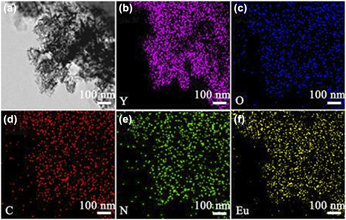Published online by Cambridge University Press: 06 February 2019

Small luminescent Y2O3:Eu3+ particles were prepared by a hydrothermal method first, and then, Y2O3:Eu3+/C3N4 nanocomposites were further prepared by a chemisorption method. The luminescent Y2O3:Eu3+/C3N4 nanocomposites are not only a promising down-conversion luminescent material, but also it could be used to improve the efficiencies of dye-sensitized solar cells (DSSCs). Especially, the morphology of Y2O3:Eu3+ has great influence on the performance of DSSCs. Compared with Y2O3:Eu3+ nanorods, the introduction of small Y2O3:Eu3+ particles into the cells is conducive to the improvement of cell efficiency. The efficiencies of TiO2-Y2O3:Eu3+–C3N4 composite cells were not only higher than those of pure TiO2 cells but also higher than those of TiO2-Y2O3:Eu3+ or TiO2-C3N4 composite cells, resulting in the enhancement of the average efficiency of the TiO2-Y2O3:Eu3+–C3N4 composite cell from 7.16% to 8.14%, with 14% improvement over the pure TiO2 cell. The enhancement of the efficiency can be attributed to the synergetic effect of small Y2O3:Eu3+ particles and C3N4.